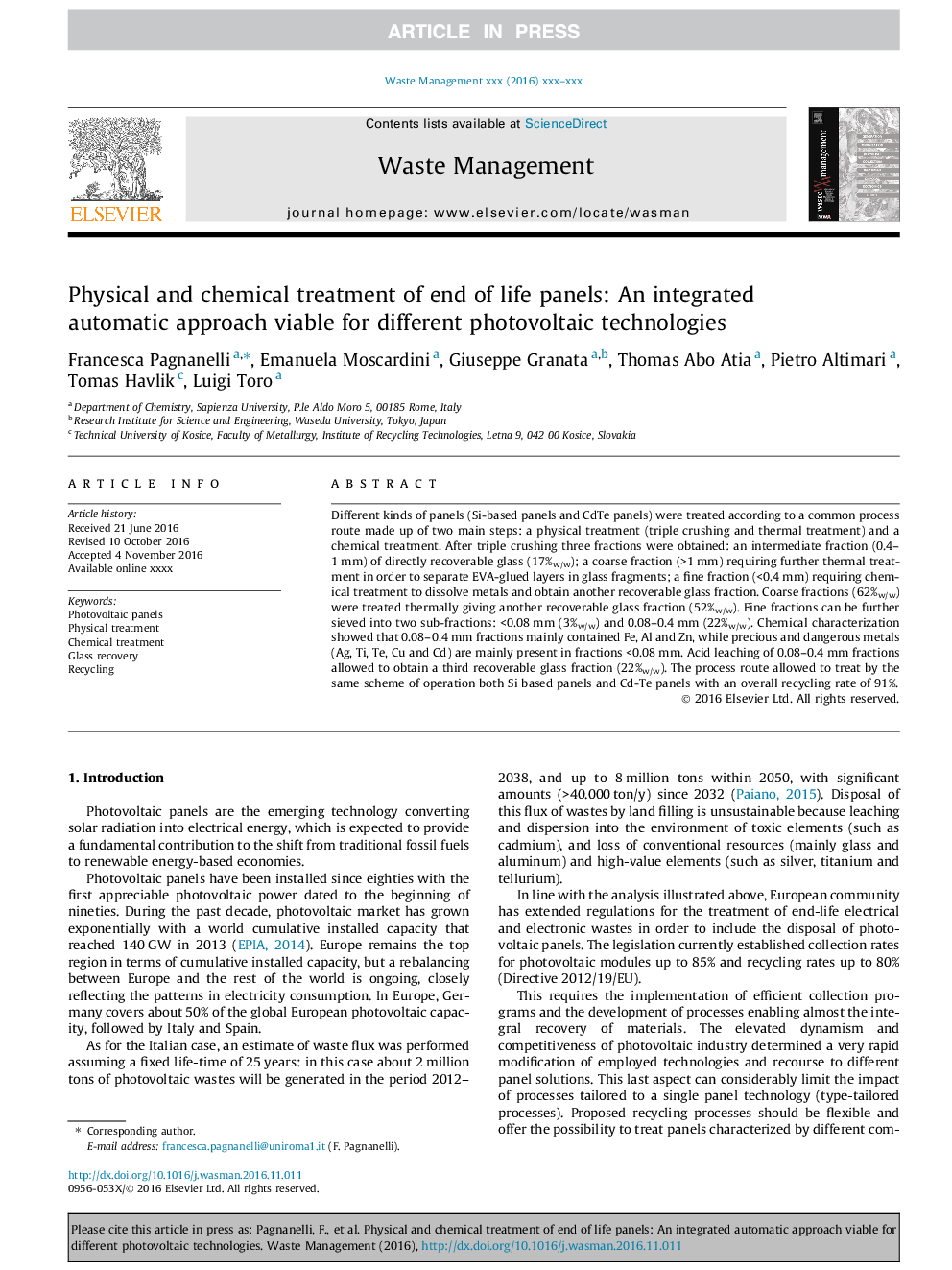| Article ID | Journal | Published Year | Pages | File Type |
|---|---|---|---|---|
| 5757046 | Waste Management | 2017 | 10 Pages |
Abstract
Different kinds of panels (Si-based panels and CdTe panels) were treated according to a common process route made up of two main steps: a physical treatment (triple crushing and thermal treatment) and a chemical treatment. After triple crushing three fractions were obtained: an intermediate fraction (0.4-1Â mm) of directly recoverable glass (17%w/w); a coarse fraction (>1Â mm) requiring further thermal treatment in order to separate EVA-glued layers in glass fragments; a fine fraction (<0.4Â mm) requiring chemical treatment to dissolve metals and obtain another recoverable glass fraction. Coarse fractions (62%w/w) were treated thermally giving another recoverable glass fraction (52%w/w). Fine fractions can be further sieved into two sub-fractions: <0.08Â mm (3%w/w) and 0.08-0.4Â mm (22%w/w). Chemical characterization showed that 0.08-0.4Â mm fractions mainly contained Fe, Al and Zn, while precious and dangerous metals (Ag, Ti, Te, Cu and Cd) are mainly present in fractions <0.08Â mm. Acid leaching of 0.08-0.4Â mm fractions allowed to obtain a third recoverable glass fraction (22%w/w). The process route allowed to treat by the same scheme of operation both Si based panels and Cd-Te panels with an overall recycling rate of 91%.
Related Topics
Physical Sciences and Engineering
Earth and Planetary Sciences
Geotechnical Engineering and Engineering Geology
Authors
Francesca Pagnanelli, Emanuela Moscardini, Giuseppe Granata, Thomas Abo Atia, Pietro Altimari, Tomas Havlik, Luigi Toro,
